Fabergé Events in the USA and Russia
Theme: Fabergé Research – What’s New!
Due to space considerations the event has a limit of 50 attendees. At press time, 15 slots are available on a first-come, first-served basis before June 10, 2018.
More details:
- Richmond Program
- Registration Form ($50 to benefit the Freeman Library at the museum)
- Richmond Hotels
- Hillwood Event Details

Pratt Fabergé Eggs
(Courtesy Virginia Museum of Fine Arts)
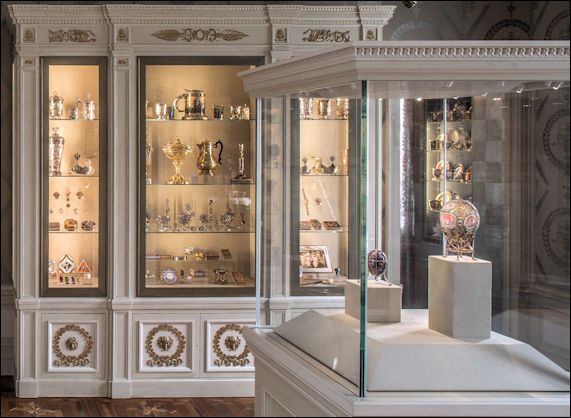
New Installation
(Hillwood Estate, Museum & Gardens / Photographed by Erik Kvalsvik)
- Did Empresses receive presents during the previous two coronations in Russia?
- What were the objects given to the Empresses?
- What sums were paid for the presents?
Russian Emperor Nicholas I died in 1855 and a year later his son Alexander II and his wife Empress Maria Alexandrovna were crowned according to Russian traditions in Moscow. Dowager Empress Alexandra Feodorovna (1798-1860) also took part in this ceremony. It is interesting to compare the gifts given in 1856 to the two Empresses as coronation gifts. Dowager Empress Alexandra Feodorovna received several presents including a brooch with a portrait of her crowned son Alexander II for 8036 rubles, a bracelet (5500 rubles), earrings (2972 rubles) and other gifts costing all together 16,993 rubles. In contrast, the newly-crowned Empress Maria Alexandrovna received many more valuable presents totaling 63,478 rubles – it was an extremely large sum!
- Necklace: 43,956 rubles
- Bracelet with a portrait of her spouse Emperor Alexander II: 2,874 rubles
- Bracelet with portraits of Emperor Nicholas I and Empress Alexandra Feodorovna: 5,191 rubles
- Two sautoirs: 2,532 rubles
- Three fans: 6,125 rubles
- Pendent: 2,800 rubles
- Total: 63,478 rubles (Fond 468. Inv. 8. File 195. P. 42)
Everything changed in 1883 at the time of the Coronation of Alexander III and Empress Maria Feodorovna. She received only a bracelet costing 14,585 rubles. It appears in consideration of this sum, Nicholas II decided the cost of presents to his mother and his wife each should be not greater than 12,000 rubles. Carl Fabergé was advised about this sum before he started his work on Alexandra Feodorovna’s present. The Emperor chose the object after four different drawings of the brooch were sent by Fabergé to the Cabinet of HIM. On June 3, 1895, the Emperor approved a brooch (A.) in a shape of a rose with yellow diamonds. An invoice in the RGIA gives information on the diamonds and total price (B.) of the brooch.
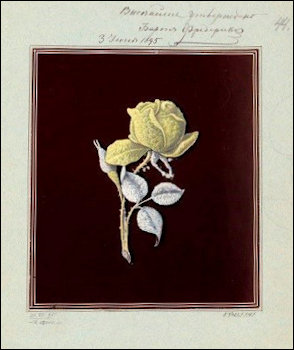
A.
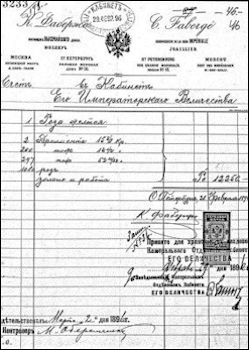
B.
- Top – Approved by His Imperial Majesty. Baron Freedericksz. 3 of June, 1895.
- Lower left – Date 21.06.1895. Price of work – 12,000 rubles.
- Lower right – Signature in Russian K. Fabergé (Fond 468. Inv. 8. File 195. P. 44)
B. Fabergé Invoice:
- Yellow rose
- 2 diamonds – 15 3/8 carat
- 200 diamonds – 14 1/2 carat
- 297 diamonds – 52 10/32 carat
- 1080 roses
- Gold and labor
- Total – 12,250 rubles
- 28 of February 1896 (Fond 468. Inv. 8. File 195. P. 46)
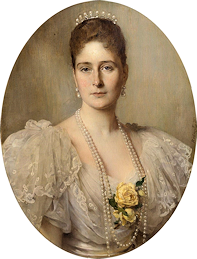
C.
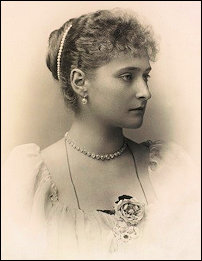
D.

E.
C. Empress Alexandra Feodorovna by Austrian Artist Heinrich von Angeli (1840-1925), 1897 (Courtesy Wiki)
D. Empress Alexandra Feodorovna, ca. 1894 (Courtesy Royal Collection Trust)
E. Rose Bud Egg Presented by Nicholas II to His Wife Empress Alexandra Feodorovna, Easter 1895. Fabergé. M. Perkhin. H. 7.4 cm. Inside the Yellow Rose Bud Was Hidden a Crown with Diamonds and Rubies. (Courtesy Fabergé Museum, St. Petersburg)
Dowager Empress Maria Feodorovna (F.) received a brooch in the shape of a heart under an Imperial crown with large diamonds for the Coronation of Nicholas II. Once again, Fabergé sent several different drawings to Emperor Nicholas II with a request to choose the one he wanted created. On November 11, 1895, the Emperor approved one of the versions (G.).
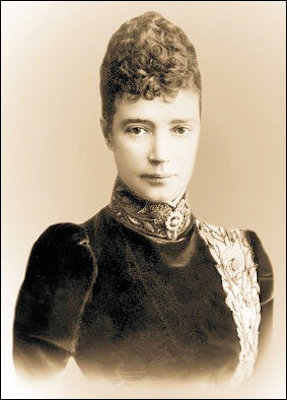
F.
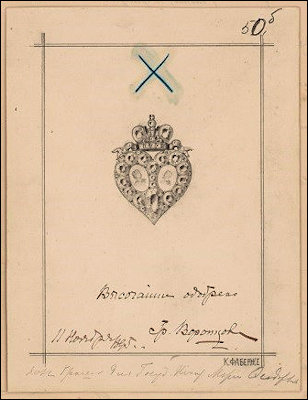
G.

H.
F. Empress Maria Feodorovna (Courtesy of the Authors and Their Publisher Liki Rossii)
G. Drawing of a brooch in a shape of a heart painted by jeweler Fabergé approved by the Emperor Nicholas II.
On the drawing is written in pencil: Approved by His Imperial Majesty. 11 of November, 1895. Count Vorontsov.
Brooch for Empress Maria Feodorovna (Fond 468. Inv. 8. File 195. P. 50)
H. Fabergé invoice:
- Brooch-heart with number 1033
- 2 miniatures
- 2 diamonds for portraits in 2 29/32 carats – 750 rubles
- One diamond pear in 7 10/32 carats – 3,500 rubles
- 11 diamonds in 18 3/32 carats – 5,156 rubles
- 35 diamonds in 2 19/32 – 233 rubles
- 56 diamonds in 17/32 – 69 rubles
- 94 roses – 61 rubles
- Box – 229 rubles
- Total – 10,000 rubles
- 18 of April 1896 Carl Fabergé (Fond 468. Inventory 8. File 195. P. 52)
This total price is a bit less than the cost of the Alexandra Feodorovna brooch, but the difference between the two presents is not large. Maybe it is possible to explain that thanks to the deep love and respect of Nicholas II for his mother, it was his wish not to offend her, especially after the recent death of her spouse and his father, Alexander III.
Also mentioned in the documents are two miniature portraits of Nicholas II and Alexandra Feodorovna complete with the Cabinet of HIM inventory numbers 140 and 141 for 110 rubles each to be placed in this diamond brooch. (Fond 468. Inv. 8. File 195. P. 51) The total price of this brooch increased by 220 rubles bringing the sum to 10,220 rubles. We ascertained the two miniature portraits were produced by the Danish miniature artist Johannes Zehngraf (1857-1908) and photographer Anaklet Pasetti (ca. 1850-1903?). His invoice for these miniatures exists among documents on the Coronation. Unfortunately, traces of this brooch were lost in turbulent history of 20th century.
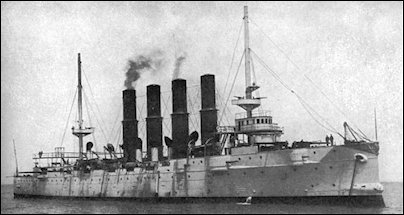

Russian Cruiser Varyag before and after the 1904 Battle of Chemulpo. What is Her Connection to a Fabergé Cigarette Case?
Elena Yarovaya, Senior-Curator, Numismatics Department, State Hermitage Museum, (St. Petersburg, Russia)
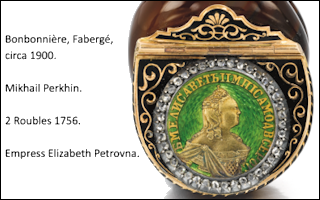
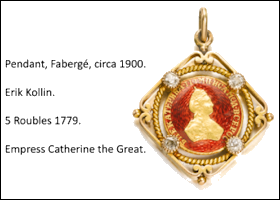

Gold and Silver Coins Used in Fabergé Objects
(Courtesy Sotheby’s London)
Traditional – tankards, goblets, charkas, cups, vases
Unique – ashtrays, cup holders, cases, paper knives, variations of bonbonnières, brooches, cufflinks, pendants, magnifiers, buttons, hand seals, belt buckles.
Interesting discoveries in this research are the various techniques used by the Fabergé jewelry firm –
- Installing the historical coin with the possibility of viewing both the front and the back of the coin, or soldering the coin in place, so only one side of the coin is visible.
- Using enameling techniques to create transparent, opalescent and opaque enamels.
- Applying guilloché patterns on the coins was rather common.
Synopsis of the paper, Coins in the Fabergé Firm Items: Assortment of the Pieces and Producing Technology. Numismatics Readings in the State Historical Museum. Moscow, 2017 presented at the International Academic Conference at the Fabergé Museum in St. Petersburg, Russia, November 9-11, 2017. In Russian.
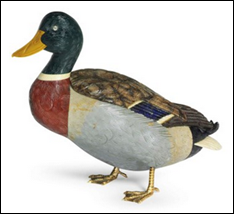
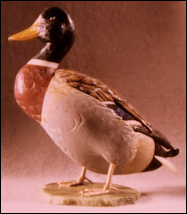
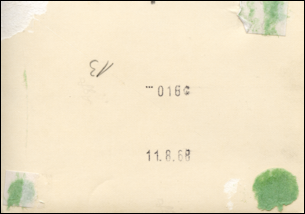
A.
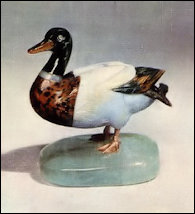
B.
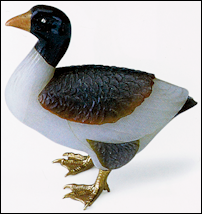
C.
B. [Dreher] Muscovy Duck, Early 1950’s (The Art of Fabergé, A. Kenneth Snowman, 1962)
C. Fabergé Goose, 1911 (Fabergé’s Animals: A Royal Farm in Miniature, Caroline de Guitaut, 2010)
There is another Dreher piece once thought to be the work of Fabergé. Gerd’s father, Paul (1910-1968), made this Muscovy duck (B.) in the early 1950s. Gerd was Paul’s apprentice at the time and was present when his father carved the duck. Patrick Dreher (b. 1970), Gerd’s son, recounted the story in his presentation at the 2015 International Fabergé Museum Conference in St. Petersburg.2 The identification of the hardstones in the duck differs between sources. Snowman (1962) says the duck is made from “pale blue translucent chalcedony and crocidolite”3 but Dreher describes the gems as “hawk’s eye [a chatoyant grayish blue variety of quartz that owes its fibrous structure to crocidolite] and white agate”.2 Dreher and Snowman agree the duck’s breast is speckled brown jasper, and the duck has diamond eyes and gold feet. Dreher has identified the jasper as being from the uranium mines near Birkenfeld, just outside of Idar-Oberstein. The hawk’s eye and white agate, not typical materials used in Fabergé works, support the Dreher attribution.2 Snowman adds the gold feet are marked with the initials “H.W.”3 In consultation with Timothy Adams, it is doubtful this is Henrik Wigström’s mark. Wigström was senior workmaster with his own studio from 1903 until he retired after the Russian Revolution in 1917. In addition, this duck is mounted on an aquamarine base and Fabergé did not place his animal carvings on stands. If we did not have evidence from the Dreher archives, there are too many discrepancies to support a Fabergé attribution.
Misattribution is common with hardstone carvings because the craftsmen did not sign their work and there is very little documentation in Fabergé’s or the stone carvers’ archives. Initially, the Fabergé workshop did not produce their own carvings but outsourced the work to others. In the late 19th century, in order to meet demand, Carl Fabergé and his team created the designs, some of which were produced at Carl Woerffel’s lapidary factory in St. Petersburg. Other orders were given to Moritz Stern, a gem dealer in Germany, who took them to various carvers in Idar [now Idar-Oberstein].1, 2, 4, 5 Karl Dreher (1861-1943) and his son Hermann (1886-1960) made pieces based on plaster models provided by Fabergé. Once orders were completed, the models were discarded, as there was no need to keep them. Nearly finished pieces were returned to Fabergé unsigned, where embellishments, like gemstone eyes and gold tails or feet, were applied.5 Even at the completion stage, hardstone carvings were usually not marked by Fabergé. In 1904, Fabergé decided to send his designers to Idar to be trained by the German carvers. In 1908, Fabergé purchased the Woerffel workshop and production of all Fabergé hardstone carvings began to transition to St. Petersburg.2
The Fabergé pieces with clear attribution are the animal carvings made for the British Royal Family. The history of these carvings is provided in The Fabergé Menagerie by William R. Johnston, et al., 2003, and Fabergé’s Animals: A Royal Farm in Miniature by Caroline de Guitaut, 2010. In 1907, the Royal Family commissioned a series of carvings to be made of the family pets and farm animals on the Sandringham estate. The order was placed through Fabergé’s London office. Frank Lutiger and Boris Frödman-Cluzel were two of Fabergé’s sculptors sent from St. Petersburg to the estate in Norfolk to study the animals and replicate them with wax models. After approval by King Edward VII, the models were taken back to Fabergé’s lapidary shop in St. Petersburg where they were fashioned from Russian material. Some of these pieces were marked, while others were not. Some were carved from a single stone or made from composites, like this goose from 1911 (C.). The body of the goose is made of quartzite and obsidian with rose cut diamond eyes and gold feet signed by Henrik Wigström.6 Today, the British Royal Family’s collection of approximately 700 Fabergé works, which includes about 300 animal hardstone carvings, is the largest in the world.1
For more information on the Dreher family and history of gem cutting in Idar-Oberstein, see the article and accompanying videos in Gems & Gemology, Winter 2017, “Gem Virtuosos: The Drehers and Their Extraordinary Carvings” and the newly-published book, Dreher Carvings: Gemstone Animals from Idar-Oberstein, edited by Johanna Eberl, 2017.
1Johnston, William R., et al. The Fabergé Menagerie, The Walters Art Museum, Baltimore, 2003, pp. 19- 20, 22, 24, 146.
2Dreher, Patrick, “History of the Dreher Family Carvings.” in International Scientific Conference, Fabergé Museum: Stone-Cutting Art, October 8-10-2015, pp. 177-179 (Entire article: pp. 176-181 [English language portion]).
3Snowman, A. Kenneth, The Art of Fabergé, 1962, Colored plate XXXVI facing black and white plate 238; Wartski advertisement in Connoisseur (English edition), Vol. 144, no. 581, November 1959: Ad page 67; also American edition of the same journal published in December 1959: Ad page 67.
4Eberl, Johanna, ed., Dreher Carvings: Gemstone Animals from Idar-Oberstein, 2017, pp. 36-37.
5Wild, Klaus, Eberhard. “Ueber die Nachbildung Fabergéscher Figuren in Idar-Oberstein” in Goldschmiede-Zeitung, no. 2, 1981, pp. 108-109. In German. English summary in Fabergé and His Works: An Annotated Bibliography of the First Century of His Art, by Christel Luddewig McCanless, 1994, entry no. 1047, pp. 214-215.
6Guitaut, Caroline de, Fabergé’s Animals: A Royal Farm in Miniature, 2010, pp. 4, 148.
Barry Shifman, Sydney and Frances Lewis Family Curator – Decorative Arts from 1890 to the Present, and
Courtney Tkacz, Archivist (Virginia Museum of Fine Arts)

Rock Crystal Easter Egg with Revolving Miniatures
(Photograph by Katherine Wetzel,
© Virginia Museum of Fine Arts)

Painted Miniature of Cathcart House
by Johannes Zehngraf
(Photograph by Katherine Wetzel,
© Virginia Museum of Fine Arts)
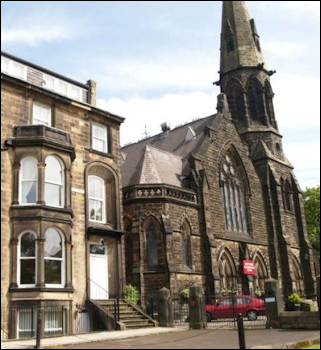
Cathcart House and West Park United Reformed Church,
Formerly Known as Congregational Church
(Courtesy Northern English Photographs, © Phil Brown)
Shortly after her arrival, Princess Alix discovered that Mrs. Allen had very recently given birth to twins. The Princess, seeing this as a signal of good luck, expressed the desire to stand as their godmother and requested the children be named after her and her husband-to-be. The babies, Alix and Nicholas Allen were baptized at St. Peter’s Church in Harrogate on June 17, 1894. While a huge crowd gathered outside, Princess Alix stood alongside the other three godparents and presented the baby boy to the vicar. The Princess bought token christening presents for the twins in Harrogate – a pair of gold cufflinks and a gold stock pin1 for Nicholas, and a small gold enameled heart-shaped necklet for Alix.
Princess Alix and her party left Harrogate two days after the christening, on June 19. Alix became the Russian Empress on November 26, 1894, when she married Nicholas, who accepted the “Oath of Allegiance” as Emperor Nicholas II on November 1 following the death of his father, Emperor Alexander III. Despite her new role and responsibilities in Russia, Alix never forgot her two godchildren in Harrogate, and newly rediscovered documents help illuminate the lasting connection between the Princess and the Allens. The Empress continued to keep in touch with the Allen twins over the years, sending presents for their first birthdays, their confirmations2, and their twenty-first birthdays. She also sent more formal christening gifts the year after she left Harrogate, when each child received a matching enameled cutlery set in a wooden presentation box. In 2017, a cutlery set was acquired by Harrogate Museums and Arts at auction3, along with a scrapbook4 kept by the Allen family which contains a great deal of fascinating information.
Among the contents of the scrapbook are news clippings from the time of the Princess’ visit to Harrogate, a drawing she made for her niece when Princess Alix visited Cathcart House, and details about the Allen twins throughout their lives. What is also clear from the scrapbook is how much her time at Cathcart House had meant to the Empress. Contained within the scrapbook are two letters sent by Fabergé to Mr. Allen in 1895 requesting images of Cathcart House for the 1896 Imperial Easter Egg.

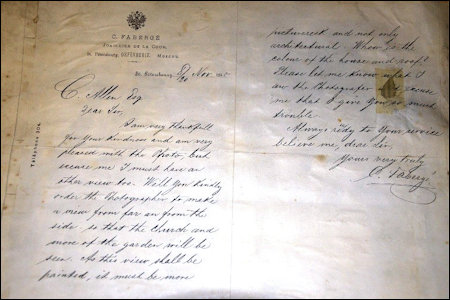
Letters by Carl Fabergé Dated 1895 Sent to the Allen Family
(Courtesy of Harrogate Museums and Arts, Harrogate Borough Council, UK)
Dear Sir,
His Majesty the Emperor has charged me to make a rich album containing views of all places where Her Majesty lived in her youth.
Would you be kind enough to send me a photo of your house in which the Princess Alice lived in 1894. Or if you have none, would you kindly order a photograph to make a good view of the garden, house etc., it need not be a large (in [?] 4″ or even smaler [sic]) I will pay with pleasure the expenses.
I hope, dear Sir, you will favour me with an answer and beg to believe me
Yours very thankfully
C. Fabergé
C. Allen Esq.
Dear Sir,
I am very thankfull [sic] for your kindness and am very pleased with the Photo, but excuse me I must have an other view too. Will you kindly order the Photographer to make a view from far an[d] from the side – so that the church and more of the garden will be seen. As this view shall be painted, it must be more picturesresk [sic] and not only architectural. Whow [?] is the colour of the house and roof? Please let me know what I ow[e] the Photographer and excuse me that I give you so much trouble.
Always ready to your service believe me, dear Sir,
Yours very truly
C. Fabergé
The original documents in the scrapbook, and the beautiful gifts sent to the Allen twins over the course of their lives offer evidence of a special connection between a Harrogate family and the last Emperor and Empress of Russia, and remain significant to both the Royal Pump Room Museum where they are displayed, and to the social history of Harrogate. Moreover, the newly discovered Fabergé letters provide new insights into one of his most extraordinary creations, the 1896 Rock Crystal Easter Egg with Revolving Miniatures, now a treasured highlight of the Lillian Thomas Pratt collection at the Virginia Museum of Fine Arts.
1Term used to describe an elegant golden safety pin which was the gift for baby Nicholas Allen.
2Cufflinks made by Fabergé.
3The cutlery set was made by Ivan Saltikov, whose silverware factory was founded in 1884, and was retailed by Grachev, established in 1866. News reports suggesting the set is by Fabergé appear to be erroneous.
4At press time, Nicola Baxter shared good news: “The Friends of the Harrogate District Museums have made a donation of £2,000 towards the cost of conserving the archival scrapbook and she has applied for funding to cover the additional costs required for the work”. The scrapbook is not on view at the present time.

Plaster Cast of the Livadia Palace Jetton
(Courtesy of Livadia Palace Museum)

Old Yalta Magazine
(Courtesy of the Authors)
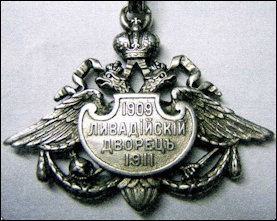
Photograph of the Found Jetton
(Courtesy of L.I. Lysova, Editor of Old Yalta)
Six years later they enthusiastically share good news:


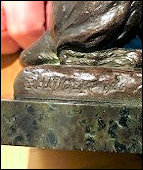
Bronze Statue of a Lioness by Franz Lutiger
(Courtesy of John and Paul Jenkins, UK)
Lutiger and Alfred Pocock were the two modelers employed by the London branch. Bainbridge says in Twice Seven (London, 1933) that Lutiger executed for the London branch in 1906-07, four chased silver bowls decorated with ships of the British Navy, which were purchased by Sir Ernest Cassel. He also modeled the racehorses of the Rothschilds, the international banking family, and he exhibited at the Royal Academy. (Lowes and McCanless, Fabergé Eggs: A Retrospective Encyclopedia, 2001, p. 220)
Christie’s, London June 4, 2018 Russian Art
5 Minutes with… An Onyx Polar Bear by Fabergé, Margo Oganesian (November 23, 2017)
10 Questions to Ask about Tiaras by Jessica Peshall (November 16, 2017) This topic was also discussed in Fascinating Fabergé Tiaras by Christel Ludewig McCanless (Fabergé Research Newsletter, Spring 2013)
15 Things You Need to Know about Fabergé by Helen Culver Smith (May 23, 2017)
Sotheby’s London
Sotheby’s London June 5, 2018 Russian Works of Art, Fabergé and Icons
The Charming Tradition of Fabergé Egg Pendant Necklaces by Marie Sapozhnikova (November 17, 2017)
Doyle New York
All the Grand Duke George Mikhailovich family items offered in the sale were once owned or inherited by Princess Nina Georgievna (1901-1974) and passed on to her descendants. The absence of items belonging to Princess Xenia Georgievna (1903-1965) can be explained by the fact that a large collection of her Russian art and personal possessions, including many works by Fabergé, were bequeathed to the Middlebury College Museum of Art in Vermont by her daughter, Nancy Leeds Wynkoop (1925-2006). It is thought that many of these objects and personal possessions were brought out of Russia when the sisters left for England with their mother in 1914 and by the Dowager Empress Marie Feodorovna, who had been living at Kharaks, George Mikhailovich’s Crimean estate, prior to her exile from Russia in 1919.
The auction included two small silver framed icons by Fabergé from George Mikhailovich’s family. A rectangular icon depicting a Guardian Angel (Lot 106, illustrated below) was made in Moscow between 1908 and 1917 and belonged to Grand Duke George Mikhailovich and his wife. It bears the scratched stock number 29697. An oval icon (Lot 110) owned by Princess Nina Georgievna depicts a half-length portrait of St. Nina, her patron saint. It was crafted in St. Petersburg by Fabergé workmaster Hjalmar Armfelt. Unfortunately, both icons had suffered paint losses and craquelure to their images, but still attained prices of $10,625 and $12,500 respectively. A third Fabergé icon in the sale (Lot 147) was owned by Prince Nikita Alexandrovich (1900-1974), the third son of Grand Duke Alexander Mikhailovich and Grand Duchess Xenia Alexandrovna, the eldest sister of Emperor Nicholas II. The silver-gilt icon was made in Moscow and features the Mother of God in a half-length portrait holding the infant Christ. The reverse of the icon is inscribed: “From Mama / Easter 1916”.
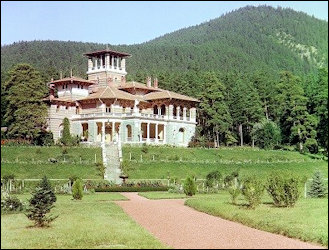
Likani Palace by Prokudin-Gorskii
(His Photographic Archives are
Held by the Library of Congress,
Washington, DC)
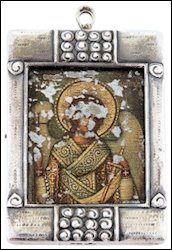
Icon Depicting a Guardian Angel
(Lot 106)
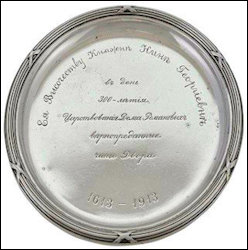
Silver Waiter (Lot 105)
Presented to Nina Georgienva in 1913
(Both Photographs Courtesy
Doyle Auction House)
Arguably the most historically important Fabergé object offered in the George Mikhailovich sale is a small silver waiter (Lot 105, illustrated above) presented to Princess Nina Georgienva in 1913 for the Romanov Tercentenary. I have previously written extensively about this item in the Fabergé Research Newsletter, Summer 2015 when the object appeared at auction.1 The waiter bears the following inscription: “To Her Highness Princess Nina Georgievna / on the day of/ the 300th Anniversary of the rule of the House of Romanov/ from the loyal / officials of the court / 1613-1913”. The marks are the Fabergé Imperial Warrant, workmaster Alexander Väkevä, the 1908-1917 “88” zolotnik silver hallmark, and the scratched stock number 21005. The little waiter sold for $8,750. Two matching waiters given to Grand Duchess Marie Georgievna and Princess Xenia Georgievna during the Tercentenary celebrations are currently held in the collection of the Middlebury College Museum of Art.
It is worth noting the top selling Fabergé item in this sale did not have an imperial provenance but once belonged to a prominent Russian aristocratic family. The 16½ inch silver samovar on bun feet (Lot 153) achieved a price of $50,000. It is decorated with the Berdyaev family coat of arms beneath the number “25” in Roman numerals. The samovar was made in the years of 1908-1917 in Moscow and presumably commemorates an important family anniversary. According to the auction catalog, the Berdyaev family was an important aristocratic and military family counting the political and religious philosopher Nikolai Alexandrovich Berdyaev (1874-1948) amongst its members.
Wendy Salmond, Professor of Art, Chapman University in Orange, California, will discuss Fabergé icons at the same event.
1Found! Princess Nina’s Tercentenary Gift by Roy Tomlin. The author first began searching for the third waiter in 2012 “Celebrating the Romanov Tercentenary with Fabergé Imperial Presentation Pieces: A Review”, Fabergé Research Newsletter, Fall 2012, before it appeared in the 2015 auction.
(Updates are posted in Exhibitions on the Fabergé Research Site)
A La Vieille Russie (ALVR), a family arts and antique dealer opened its doors in New York City in 1941, and has been for 56 years at the same address, and for 75 years on the same block. In November 2017, they moved to a new location – 745 Fifth Avenue, New York City!
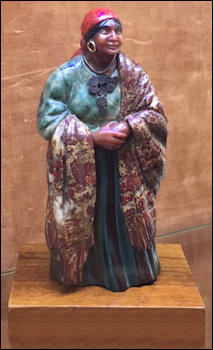

Hardstone Figure Vara Panina and Nephrite Clock by Fabergé
(Photographs Courtesy of James Hurtt)
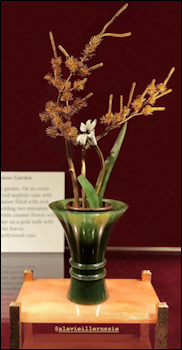
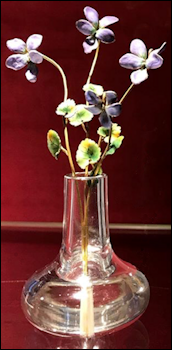
Fabergé Flower Studies
(Courtesy of Levi Higgs)
Additional Information:
- Magazine Antiques, May 1, 2018
- The Adventurine, no date
The annual Christmas catalog was once again published by ALVR in 2017. The publication dates of these catalogs for previous years are in the left bound margin of a page, usually toward the front. I am missing the years 1996, 1998-1999, 2000, and 2005. If anyone has a spare copy, please share. Contact: christel@fabergeresearch.com
Bentley and Skinner, a London jeweler, held an exhibition of objets d’art by Carl Fabergé from November 7-30, 2017, to mark the 100th anniversary of the 1917 revolution. A catalog, An Exhibition of Objets d’Art by Carl Fabergé, was published. (Courtesy John Jenkins)

Bentley and Skinner Exhibition
(Photograph by John Jenkins)
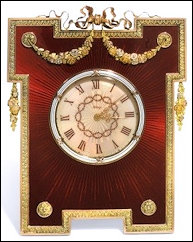
Fabergé Gold and Enamel Timepiece
(Sotheby’s London, October 18, 2017,
auction for S.J. Phillips)
M.S. Rau in New Orleans specializes in Fabergé canes and walking sticks, flatware, and more. The store regularly places advertisements for outstanding Fabergé and other objects in the New York Times and the Wall Street Journal.
Postage Stamp Honors
The 100th anniversary of Finland’s independence was celebrated at the Finlandia 2017 philatelic exhibition on May 24-28 in Tampere, Finland. Posti, Finland’s post office, issued a booklet with a souvenir sheet honoring the exhibition and stamp collector/jeweler Agathon Fabergé (1876-1951). The 1988 Fabergé booklet with a surcharge was available during the opening day of the event, and sold out immediately. Ulla Tillander-Godenhielm presented a talk about the jeweler, the second son of Carl Fabergé during the festivities. In the new book by the late Kaj Hellman and Jeffrey C Stone, Agathon Fabergé – Portrait of a Philatelist, 2017, the story of Agathon Fabergé is told briefly. The majority of the book explores his life-long passion of stamp collecting. An interview with Agathon Fabergé by Märtha Lille is reprinted from the Hufvudstadsbladet, May 26, 1929, toward the end of the book. Book reviews appeared on the Scandinavian Collectors Club website and Trevor Pateman’s Philately blog.

Agathon Fabergé Souvenir Sheet with a Single Stamp
Pictures Fabergé and Finnish Philately Rarities
(Courtesy Linn’s Stamps News)
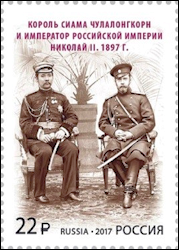

Russian and Thai Joint Issue of Postage Stamp and
Postcard (Courtesy Royal Russia News)
S.J. Phillips, a London antiques dealer for nearly 150 years, offered at a Sotheby’s London auction (October 18, 2017) some of its treasures including Fabergé, while business continues.
Court jeweller W.A. Bolin, AB is making a fresh start after 227 years! A family business and an Imperial Russian and Royal Swedish Court Jeweller since 1791 (a Royal Swedish Court Jeweller since 1916) did announce in 2017 it was planning to wind down its business. Instead the jewellery auctions were stopped, while the rest of the business was downsized, and moved to new quarters in Stockholm. In October 2017, W.A. Bolin opened a showroom at the Manor of Oxenstierna (Oxenstiernska Malmgården) and is now situated in a beautiful park area in the well-reputed area of Östermalm in Stockholm, not very far from the previous venue, and on the floor above the Bolin workshop. Visits are by appointment. The Royal Swedish Court extended its warrant. A new website in Swedish followed by an English one will be alive in June 2018. Our thanks to Christian Bolin christian@bolin.se, CEO, for staying in touch.
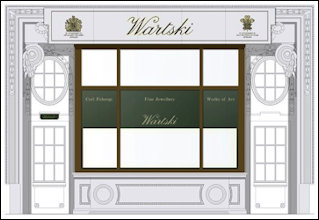
Wartski’s New Address is
60 St. James’s Street, London
(Wartski)
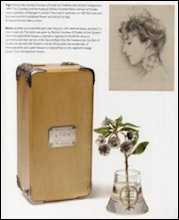
Pear Blossom
(McCarthy, Kieran, Fabergé in London:
The British Branch of the Imperial
Russian Goldsmith, 2017, p. 157)
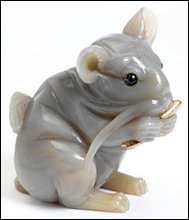
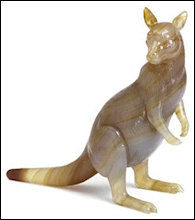
Chinchilla and Kangaroo
(© Victoria and Albert Museum, London)
Recent happenings:
- Cascone, Sarah. “$1.27 Million Fabergé Flower Stuns Jewelry Expert on Antiques Roadshow with the subtitle, Could this be the greatest jewelry find in the show’s history? (Artnet, June 23, 2017; Radio Times, April 15, 2018) Geoffrey Munn, the “stunned” expert on the Antiques Roadshow who is mentioned in the headline of the above article writes, “The piece has been known to us for ages but I had no idea it was coming to the Roadshow until the day before. It is the one in the Wartski book, and it is very, very close to the Wigstrom version. Fascinating!” In two amazing Youtube videos (video one & two) readers cans share the excitement about appraising the pear blossom study by Fabergé.
- Snowman Collection gift to the Victoria & Albert Museum was announced by Wartski. The donation was made possible through the generosity of their son Nicholas Snowman and will continue to be displayed in the William and Judith Bollinger Gallery which tells the story of jewelry in Europe from Ancient Greece to the present day. Richard Edgcumbe, Senior Curator of the Metalwork Collection, prepared a brief description and an early publication date in the Fabergé literature for each piece, “so the enthusiasts can track them down, if determined”. More…
- Additional clues about the still missing 1889 Nécessaire Egg appeared in Wartski News & Research
Last but not least, we bid a fond fare-thee-well to Geoffrey Munn, Managing Director of Wartski. In the April 2017, he was interviewed for an article in Homes and Antiques (UK) from which we learn five facts:
- In 1972, at the age 19 he began work at Wartski. The third day of employment was a baptism of fire: he led King Constantine II of Greece to objects before he realized the true identity of his new customer.
- In 1989, he appeared on the BBC Antiques Road Show, and has been a regular contributor since then.
- In 2009, he ran the London Marathon and raised £80,000 for the Samaritans.
- Mud larking on the banks of the River Thames for is one of his past times. There he finds all manner of historic objects in the mud including 17th century Chinese ceramics, 18th wig curlers and clay pipes.
- He and his wife Caroline live in London and Southwold and are keen animal lovers – 2 dogs, 2 horses, and a parrot.
In 2018, Geoffrey was made a Member of the Royal Victorian Order by HM Queen Elizabeth II. The Order was founded by Queen Victoria in 1896 to recognize distinguished service to the Royal family and remains in the personal gift of the Sovereign to this day.
Geoffrey says, “I don’t like the word retire as I don’t have a very retiring nature! I will be expanding my television work, writing no less than 3 books and concentrating on my fund-raising for Samaritans” and after 46 years at Wartski he looks forward to escaping the 9-5 routine.
Those of us, who have been privileged to visit the Wartski shop, will always recall the hospitality and the wonderful opportunities to learn about Fabergé and other art treasures in the Grafton Street store from Geoffrey and the delightful staff.
To celebrate his fresh start in life Geoffrey has a new website.

A.
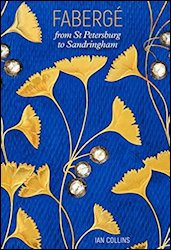
B.
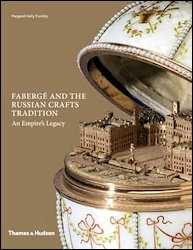
C.

D.
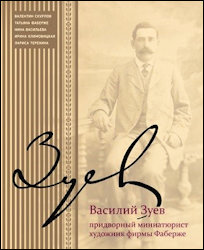
E.
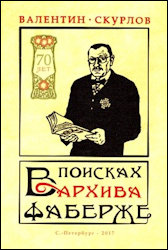
F.
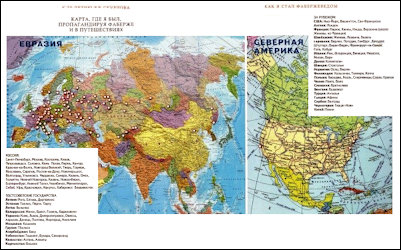
G.
Narisa Chakrabongse is the only daughter of Prince Chula Chakrabongse of Thailand and his English wife Elisabeth Hunter. She is the editor of the Oxford River Books English-Thai Dictionary and approximately 50 other titles related to art and culture in Southeast Asia. In 1994, together with Elisabeth Hunter she wrote and published Katya & the Prince of Siam, the story of an ultimately tragic love affair and marriage between a beautiful young Russian girl from Kiev and an eastern prince, HRH Prince Chakrabongse of Siam, one of King Chulalongkorn’s favorite sons. (Google)
In the 2017 publication “hitherto unpublished archive material such as letters, diaries, and photographs give a fascinating insight into life in both pre-revolutionary Russia and the Siamese court”. The Fabergé Collection of the Court of Siam (Thailand since 1939), one of two original royal Fabergé collections still treasured by the descendants of the original recipients, awaits further research.
In 2002, the British Library in London received the Chakrabongse Collection of Thai Royal Letters as a donation from M.R. Narisa Chakrabongse, granddaughter of Prince Chakrabongse. Since 2015, they are available as digitized manuscripts.
“Fabergé in the Court of Siam” by Christel Ludewig McCanless and Annemiek Wintraecken appeared in the Fabergé Research Newsletter, Winter 2013-2014.
B. Collins, Ian. Fabergé: From St. Petersburg to Sandringham, 2017. Catalog to accompany a 2017/2018 Fabergé venue held at the Sainsbury Centre for Visual Arts in Norwich, England. Loans from the Royal Collection in London and A La Vieille Russie in New York City were on view. A comprehensive review, by Irene Kukota appeared in RUSSIANART+CULTURE, December 29, 2017.
C. Trombly, Margaret Kelly. Fabergé and the Russian Crafts Tradition, 2017.
The book gives a fascinating overview of Russian decorative art, revealing a highly accomplished crafts tradition that persisted over nine centuries. The exhibition at the Walters Art Gallery (closing June 24, 2018), includes works by Carl Fabergé and his workshop, jeweled Byzantine icons, silver drinking vessels, and intricate enamels. Featured are two extraordinary Fabergé eggs once in the Russian Imperial collection – The 1901 Gatchina Palace Egg, and the 1907 Rose Trellis Egg.
Book review by Timothy Adams, independent art historian specializing in the works of Carl Fabergé, was published in Gems & Gemology, Winter 2017, Vol. 53, No. 4.
In Karla Klein Albertson’s article in Antiques and the Arts Weekly, January 30, 2018, the exhibition is reviewed and illustrated with close-ups of objects on view.
D. Fabergé: Treasures of Imperial Russia – Fabergé Museum, St. Petersburg, 2017.
Press release from the Fabergé Museum
Book review by Timothy Adams (Art Historian, USA)
The Fabergé Museum in St. Petersburg, Russia, in its long-awaited book, showcases many of its exquisite pieces by Fabergé and others artists of the time by giving the reader a broad view of the time in which Fabergé worked. Included in the book are essays by many of the leading Fabergé scholars of our time. More…
E. Skurlov, Valentin, et al., Vasilii Zuev: pridvornyi miniatiurist, khudozhnik firmy Faberzhe (Vasilii Zuev: Court Painter of Miniatures, Artists in the Fabergé Firm), 2017. In Russian.
The authors use the career of one artist for Fabergé’s jewelry firm to show how a branch of decorative arts flourished in the last decades of the Russian Empire and attained the high aesthetic standards of fine arts. Russia through Carl Fabergé’s creativity is embodied in miniature portraits set in bejeweled Easter eggs, ornate picture frames, goblets, and many other forms of metalwork and jewelry. Vasilii Zuev had the talent to receive the most important commissions such as the portraits of the emperors for the Easter egg commemorating the 200th anniversary of St. Petersburg in 1903. Both his finished works and design drawings are published here. Also included are visual and written documents on Zuev’s biography, which illustrates the fate of a highly skilled craftsman before and after the 1917 revolution, when Carl Fabergé fled, Agathon Fabergé was arrested, and many Fabergé’s artists, including Zuev, were in danger for their association with a bourgeois art form that received commissions from the imperial family. The profuse illustrations gathered in years of painstaking research by the authors give a palpable sense of the works of art and the people involved, patrons and artists. (Courtesy John Emerich, Bronze Horseman Books)
Additional Information: “Василий Зуев. Придворный миниатюрист. Художник фирмы Фаберже”, Russian Jeweler, June 6, 2017.
F. Skurlov, Valentin, et al., V poiskakh arkhiva Faberzhe (In Search of the Fabergé’s Archive), 2017. In Russian.
To celebrate the 70th birthday of Valentin Skurlov, a dedicated Russian Fabergé researcher, a book about his life was compiled and published by his friends and colleagues. It is a collection of articles, documents, letters, photographs, diaries of the author’s wanderings, all devoted to studying three decades of Skurlov’s life in connection to the legacy of the famous jeweler Fabergé. Readers with experience remember Skurlov began his fascination with the sensational exhibition, The Great Fabergé in the Elagin Palace Museum, the first exhibition of Fabergé art in the Soviet Union, since the shop closed its doors in St. Petersburg in 1918. During the exhibition (February 8 – October 1, 1989, with a catalog published the following year) Skurlov worked as a guide and as a modest research fellow of the All-Union Research Institute of the Jewelry Industry. The accompanying map (G.) shows, he has traveled to more than a hundred cities in Russia in search of Fabergé, and he has written two dozen books on the history of Russian jewelry and antiquarian art, including some with Carl Fabergé’s great-granddaughter, Tatiana F. Fabergé.

